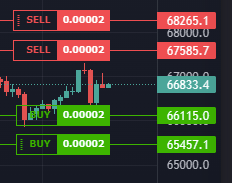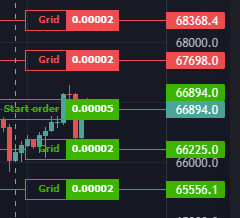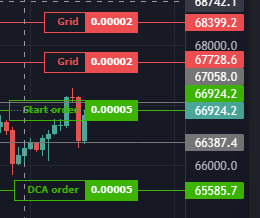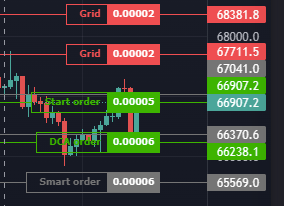To at first finally answer your question. Probably trailing and expanding for Grid Bots don’t add anything that cannot be achieved with the Combo Bot. On the other hand, because the Grid Bot is a lot easier to configure, some users still might prefer those.
With my Generalized Trading Bots at hand we probably even could replace Combo, Trading and Grid Bots, which wouldn’t be that surprising. But there’s also a benefit of simpler bots.
After reading the above mentioned article How Combo Bots Replace Grid Trailing Up and Trailing Down, let me try to give a
Comparison of the regular grid and the combo bot
Base setup
Grid Bot
-
Starts at the exact configured level
-
Uses the configure levels. Those are a wait and a configurable number of buy and sell levels. The smallest setup could look like 2 grid levels positioned like one of those
B-2 B-1 W(I.e., there hasn’t to be sell levels above the current price.)
B-1 W(1) S1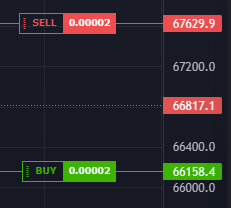
[W(1)|W(1-2)] S1 S2(I.e., there hasn’t to be buy levels below the current price.)
I don’t know whether the wait position only buys for
S1or alsoS2and thus is more likeW(1-2). -
Without trailing and/or expanding the grid will stay in its position
-
Every Grid Bot works as a single deal
Combo Bot
-
Starts a configured set of connected Grid Bots per deal not at an exactly configured price but now based on a start condition
-
In the easiest case it creates a regular Grid Bot on the price levels up from the current price. From my understanding it looks like that
B-1 W(1) S1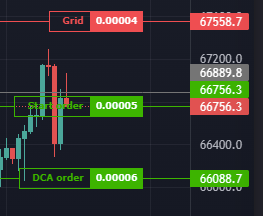
(Does anybody know what the gray line is about?)
-
Their has to be at least 1 DCA step below the current price. If we set
Active Minigrid Count = 0that grid isn’t active and if we choose the deviation big enough it never will be. Like that we could also set-up the above variants of the Grid Bot.
So in the base setup the main difference is that the Combo Bot is able to start deals according to the start condition. And that the Combo Bot requires a DCA step somewhere.
With more levels
Grid Bot
B-4 B-3 B-2 B-1 W
B-3 B-2 B-1 W(1) S1
B-2 B-1 [W(1)|W(1-2)] S1 S2
B-1 [W(1)|...|W(1-3)] S1 S2 S3
[W(1)|...|W(1-4)] S1 S2 S3 S4
If we ignore the Take Profit and Stop Loss settings we already have reached the end of what is possible with Grid Bots.
If we wanted to have Grid Bots at other levels, we always have to configure them manually. At least we can duplicate and update the setting of the existing bot (is there bulk editing if we create several of those bots which only differ where they start?)
Combo Bot
B-4 B-3 B-2 B-1 W
B-3 B-2 B-1 W(1) S1
B-2 B-1 [W(1)|W(1-2)] S1 S2This could be configured like that by using 1 DCA order with
Active Minigridenabled
or like that by using 1 DCA order with
Active Minigriddisabled
or like that by using 2 DCA orders that both only have a single Minigrid level
B-1 [W(1)|...|W(1-3)] S1 S2 S3
[W(1)|...|W(1-4)] S1 S2 S3 S4
With only a two additional grid levels or one or two DCA orders we already have more possibilities to set-up our grid. The smart orders would only add funds after a certain drop and those could also be spaced and scaled as regular DCA orders. That way we can control when the next buy order shall be executed.
As soon as the Combo Bot deal closes or if the start condition allows for consecutive deals, also another Combo Bot deal can start automatically without the additional required work that we would need for Grid Bots.
What I currently don’t understand is how the Combo Bot deal’s DCA orders average down? Because the profits of the lower grid levels possibly offset the losses of the upper levels at some time and allow the Combo Bot deal to reach its configured take profit earlier? Or if there’s no configured take profit, do they instead lower the upmost grid level by that instead?
